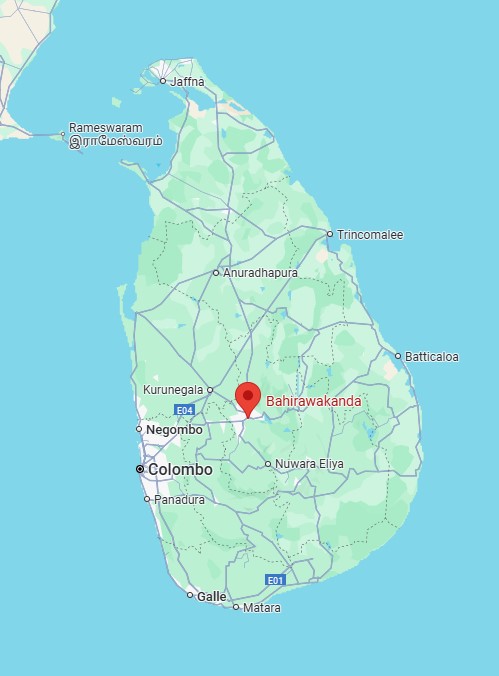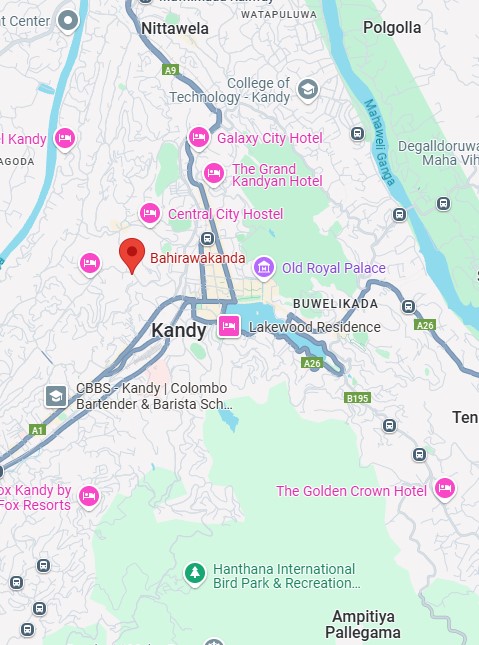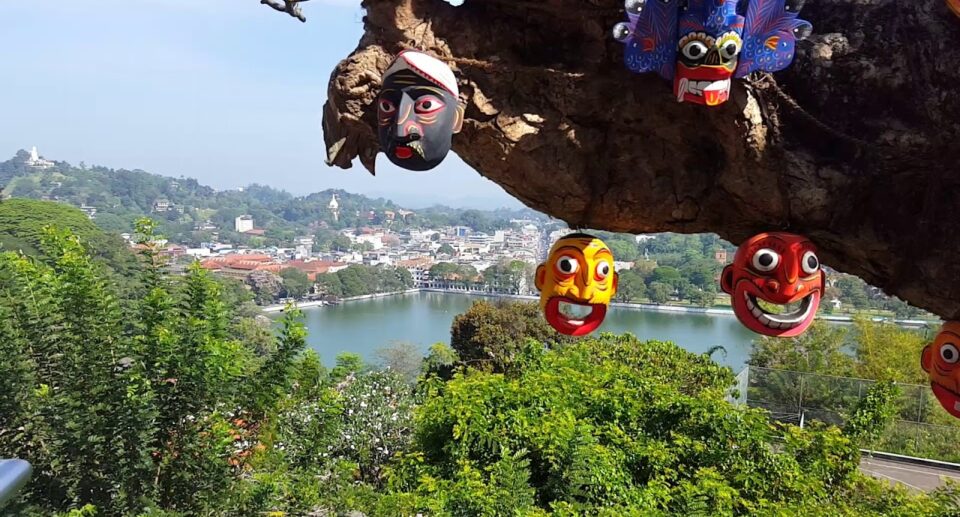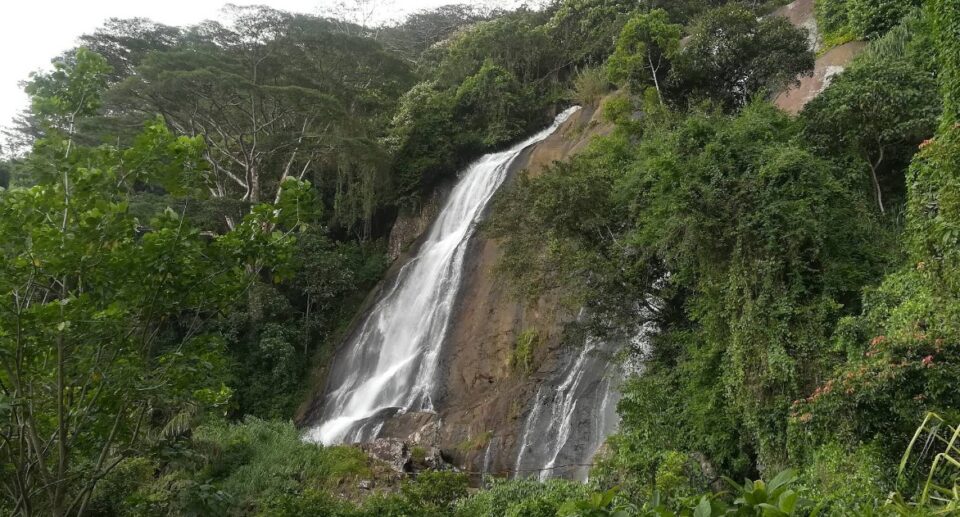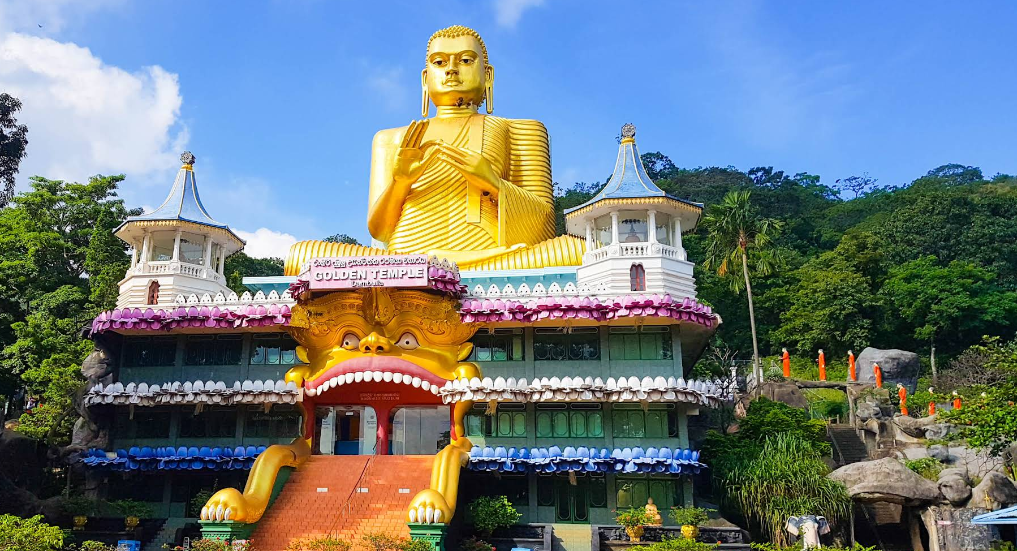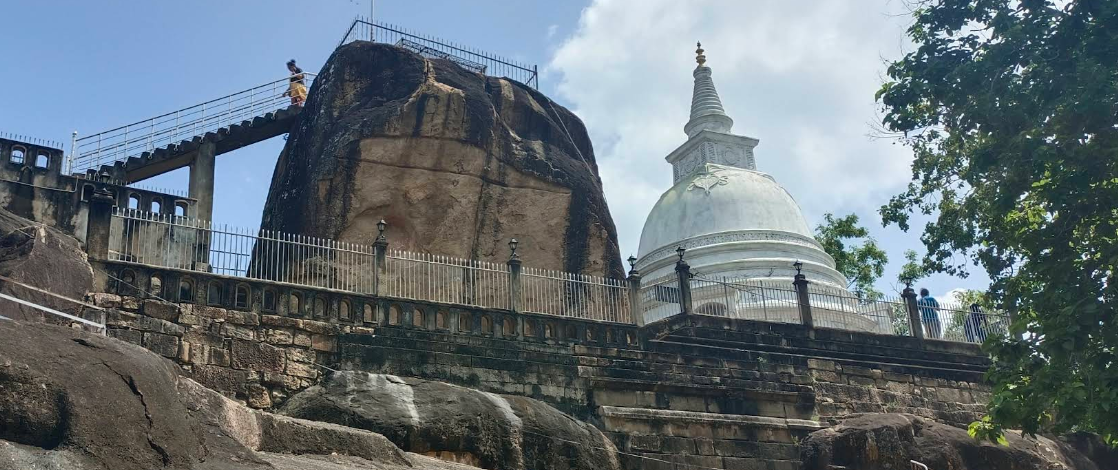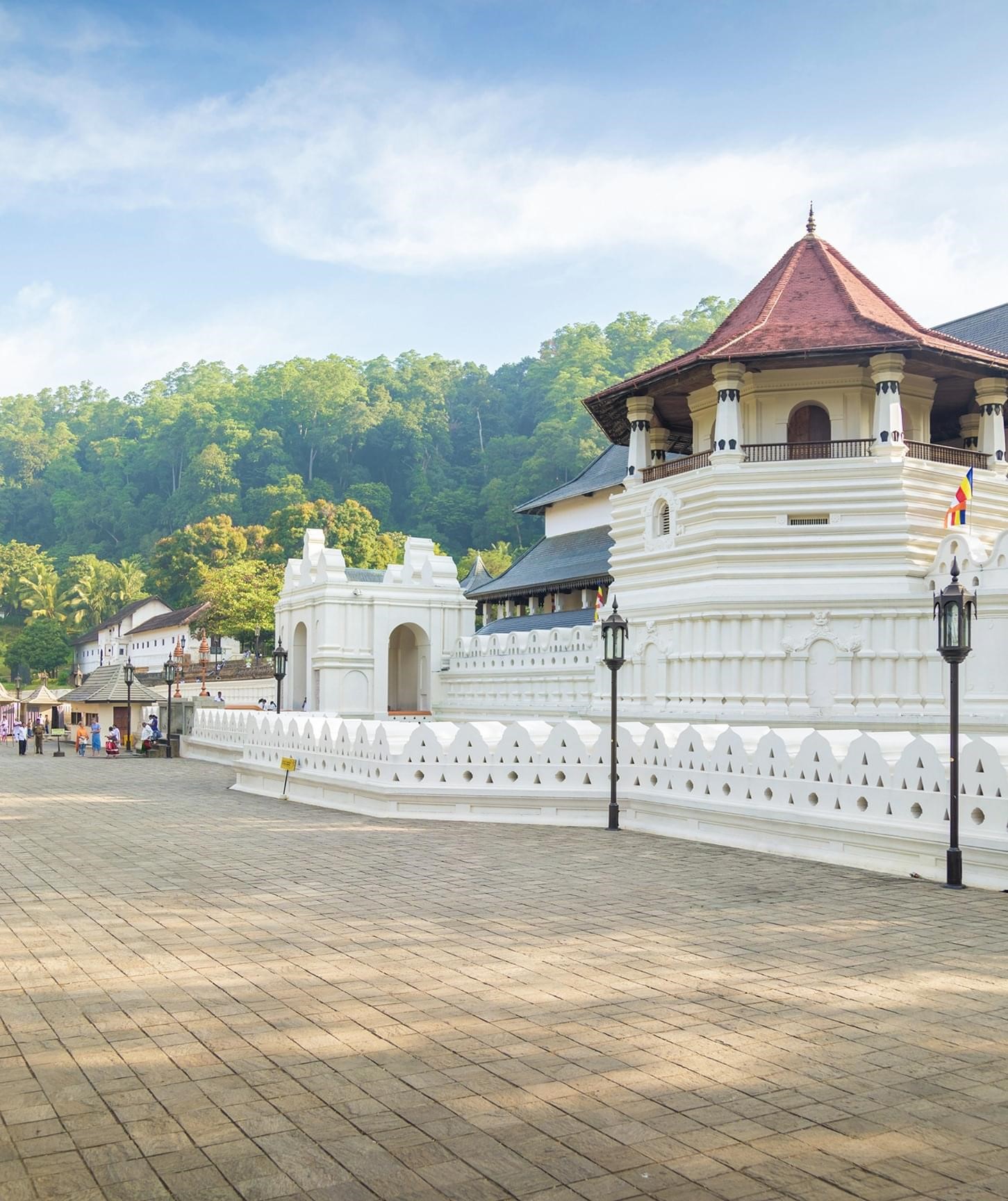Bahirawakanda: The Watchful Peace of Kandy
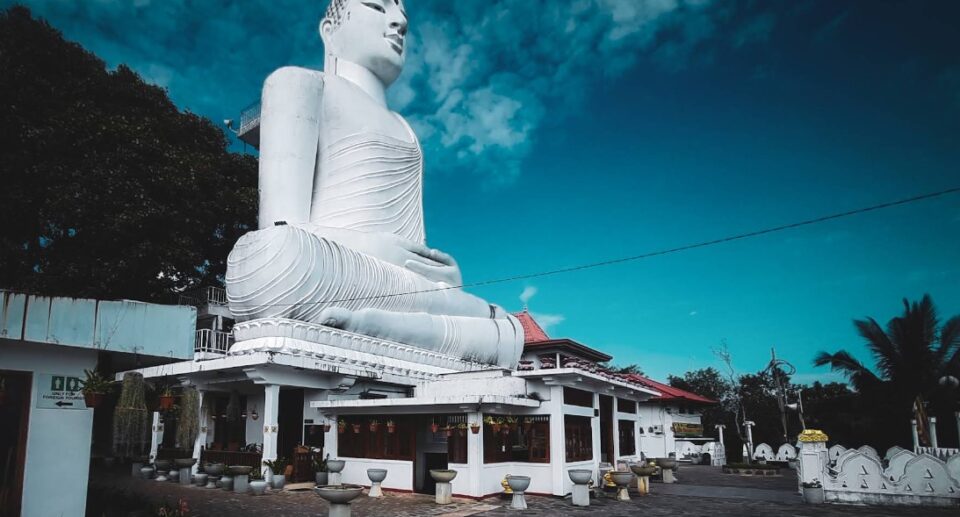
In the midst of Sri Lanka’s hill country lies the sacred city of Kandy, a city steeped in history, religion, and culture. Of its many sacred spots, one that towers not only physically, but symbolically above them all is Bahirawakanda, home of the renowned Bahirawakanda Vihara Buddha Statue. This enormous white Buddha, in contemplative rest, perches atop the hills surveying the city below as if keeping watch with wise vigilance. While the “Bahirawakanda” title might be more unpopular than the Temple of the Sacred Tooth Relic, its religiosity and symbolism make it one of Kandy’s favorite icons.
Historical and Religious Background
The name Bahirawakanda literally translates to “Devil’s Hill” in Sinhala. In the past, the site was feared by the villagers due to legends of ghosts and demons that were believed to haunt the forest-covered hill. Even nowadays, ancient rituals were performed in some instances to appease these ghosts. But now the hill has been repurposed from a place of fear to one of peace, symbolizing triumph over fear, and over superstition, of faith.
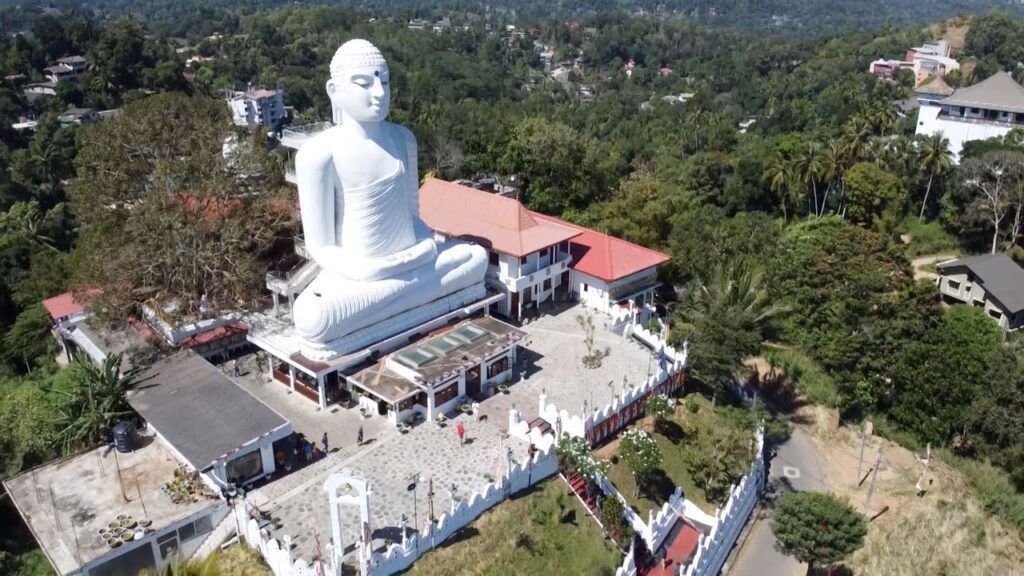
The transformation began towards the latter part of the 20th century with the construction of the Bahirawakanda Vihara Buddha Statue, or Sri Maha Bodhi Vihara for short. The 88-foot (about 26.8 meters) tall statue was inaugurated in 1993. It was constructed through the efforts of the renowned Ampitiye Dammarama Thero and free contributions made by Buddhist devotees. The concept behind its building was to transmit harmony, religious reflection, and peace in the face of a busy, urbanizing metropolis.
Architectural and Artistic Features
The standout feature of Bahirawakanda is, unquestionably, the enormous white Buddha statue, visible almost everywhere in Kandy. It depicts Buddha in the Dhyana Mudra, a meditation pose representing concentration, inner calm, and spiritual insight. The simplicity and whiteness of the design of the statue, executed entirely in white, pleasantly contrasts with the blue skies and green hills.
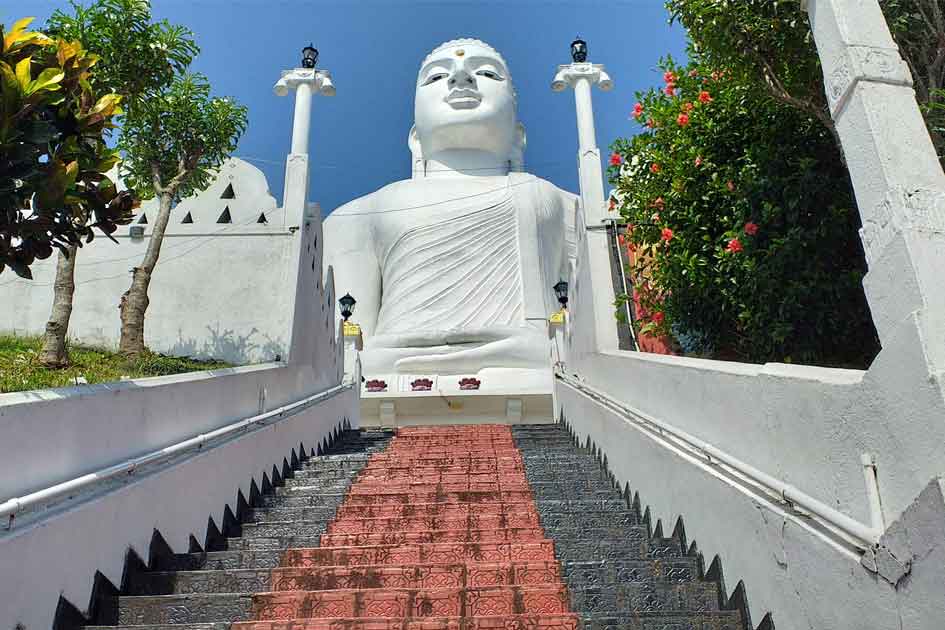
Tourists may ascend a set of stairs inside the pedestal to a small viewing platform from which they can see beautiful panoramic views of Kandy city and surrounding hills. At dusk, the statue is illuminated, casting a serene glow that adds to the spiritual character of the city.
Around the pedestal of the statue lies the Sri Maha Bodhi Viharaya, a functioning Buddhist temple in which daily rituals, meditation sessions, and spiritual teachings are conducted. The temple grounds are well maintained and offer visitors not just an esthetic attraction but also a chance for tranquil contemplation.
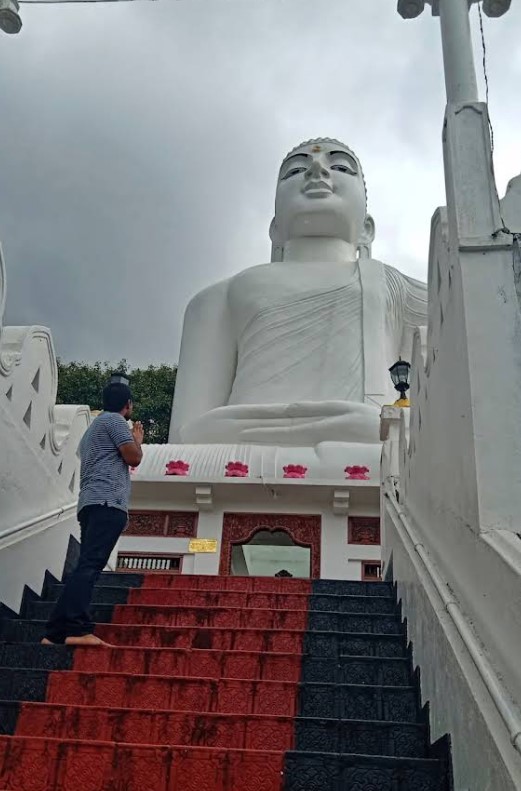
A Place of Pilgrimage and Tourism
Although Bahirawakanda is a sacred place, it is a favorite among tourists due to its visual beauty and scenic charm. Pilgrims from all over Sri Lanka and international tourists visit this place to offer homage and simply to marvel at the enormity and skill of the statue.
The ride to the top of the hill itself is an experience. The curving roads wind up past housing estates, eventually bursting into a plateau with one of the most breathtaking vistas of Kandy. Kandy Lake, Temple of the Tooth, city roads, Royal Palace complex, and even the far-off mountain ranges of the Central Highlands are all visible from here. On a clear day, it is possible to see for miles from a hill that is a photographer and nature enthusiast’s paradise.
Cultural and Spiritual Impact
Bahirawakanda is greater than a statue or a place to sightsee; it is a religious symbol that speaks profoundly to the hearts of the people. For the Kandyans, the giant Buddha is a silent guardian, a reminder of Buddhist teachings such as compassion, awareness, and non-violence every second of every day. During times of significant Buddhist festivals like Vesak and Poson, the statue is a concentration point for spiritual observance, draped with lanterns, light, and flowers.
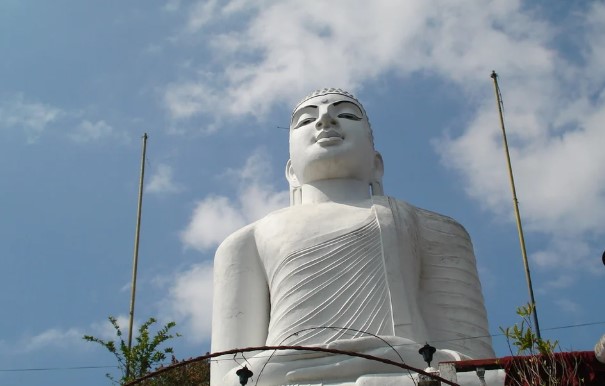
The Bahirawakanda temple is also hectic conducting community outreach and religious education. It accepts classes of children to Dhamma school, adults to meditation retreats, and programs to foster harmony among different religious and ethnic communities in Sri Lanka. In a country that has experienced rounds of political and ethnic tensions, institutions like Bahirawakanda stand as symbols of hope for reconciliation and peace.
Environmental and Community Considerations
The hill of Bahirawakanda is also a small green sanctuary in a rapidly urbanizing metropolis. The surroundings have patches of forest, birdlife, and serene environments which serve as a welcome relief to the congested city below. However, with tourism comes concerns regarding preservation, pollution, and decent behavior.
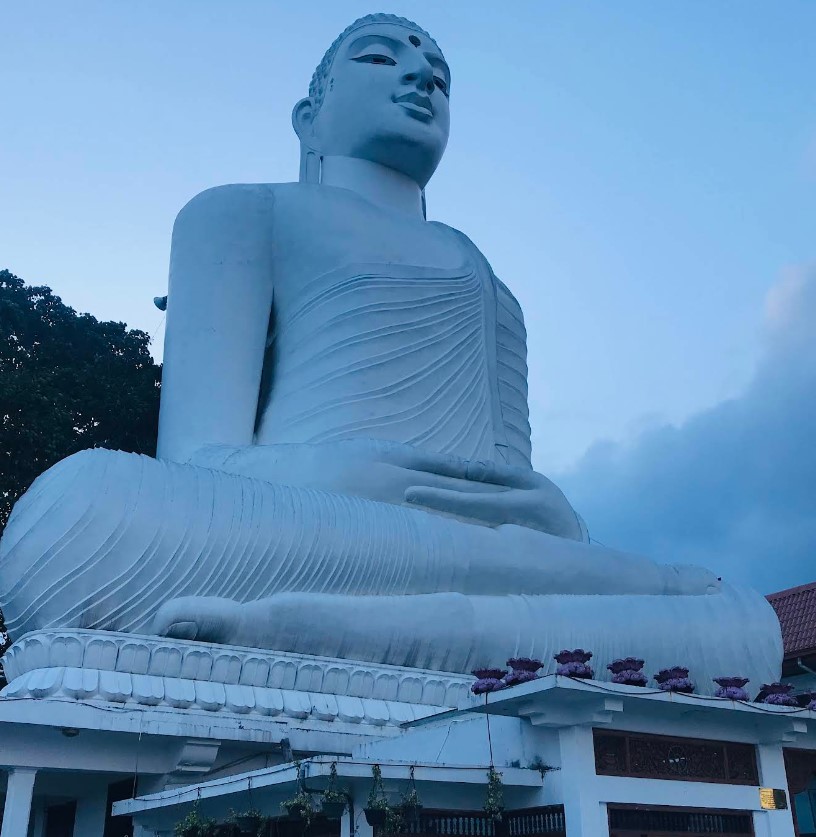
Efforts are being taken by temple administration and local authorities to keep the place clean and to make the pilgrims culturally sensitive. Tourists are humbly asked to dress modestly, take off their footwear when they are inside religious locations, and behave respectfully. Eco-tourism is also going to be introduced in the surrounding hills without harming the religious or natural value of the place.
Bahirawakanda in the Contemporary World
As Sri Lanka continues to build its tourism base, Bahirawakanda is one of those places that can successfully bring religious holiness and contemporary tourist attractions together. It is easily accessible in that it sits in the midst of the city center, but it continues to be a place of holiness.
Social media has highlighted Bahirawakanda prominently over the last few years. The Buddha statue against the horizon of sunrise or sunset has become symbolic representations of Kandy. Yet, behind the photographs and the tourists, Bahirawakanda still has something to offer—a feeling of peace, a sense of perspective, and humility in the face of something larger than oneself.

Bahirawakanda is not just a hill, and its Buddha is not just a statue. They both represent the enduring presence of spirituality in the midst of everyday life, the peaceful endurance of a city that has had a blemished past, and the timelessness of natural and man-made beauty meeting.
Whether you climb its stairs to absorb the view, sit in peace and reflect, or make the perfect photo, Bahirawakanda has something to offer every guest. It invites everyone—pilgrims, tourists, and residents—to pause, reflect, and look at the world from a higher, more peaceful plane.
By Tuk-Tuk or Taxi
A tuk-tuk or taxi ride from the center of Kandy to the base of Bahirawakanda Hill takes approximately 5 to 10 minutes. The distance is about 2 kilometers from the Temple of the Sacred Tooth Relic. Drivers are generally familiar with the location, so you can simply ask to be taken to the “Bahirawakanda Buddha Statue” or “Sri Maha Bodhi Viharaya.”
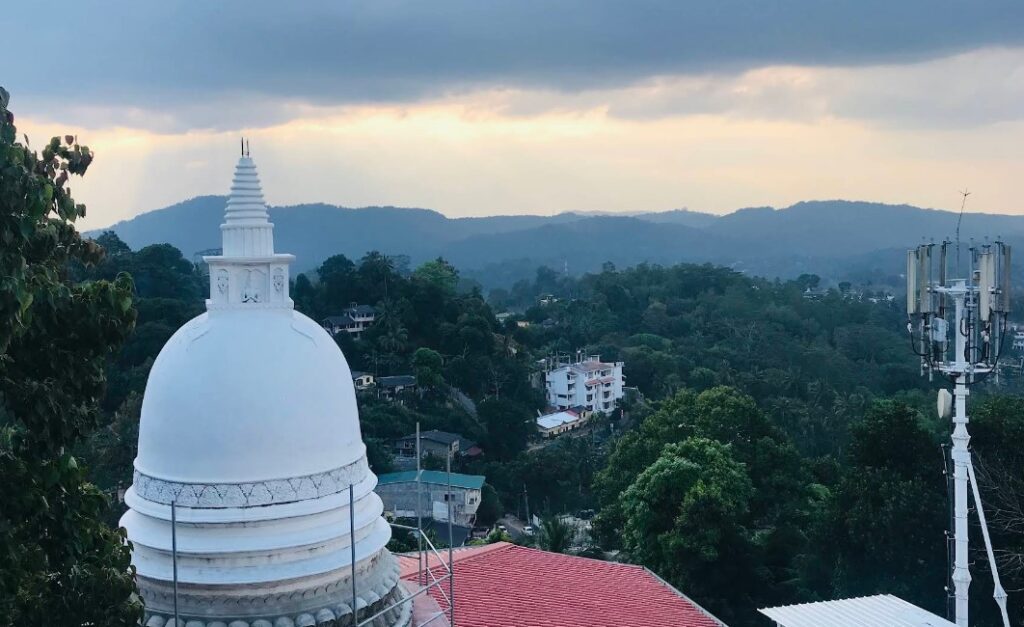
On Foot
For those who enjoy walking, the hill is accessible on foot. The route involves a gradual ascent through Kandy’s neighborhoods, providing a glimpse into local life. Be prepared for a slight uphill walk, and ensure you’re wearing comfortable footwear.
By Private Vehicle
If you’re traveling with a group or prefer a more private mode of transportation, hiring a private vehicle is an option. This can be arranged through local travel agencies or your accommodation.
Directions from Kandy City Center
- Start at the Temple of the Sacred Tooth Relic.
- Head towards William Gopallawa Mawatha.
- Turn onto Lamagaraya Road.
- Continue until you reach Sri Pushpadana Mawatha.
- Ascend Bahirawa Kanda Road for approximately 750 meters to reach the base of the statue.
Visiting Tips
- Best Time to Visit: Late afternoon or early evening offers cooler temperatures and a chance to witness the city illuminated at night.
- Dress Code: As it’s a religious site, visitors should dress modestly—covering shoulders and knees—and remove shoes before entering the temple area.
- Entry Fee: Approximately 200 LKR for foreign nationals.
- Opening Hours: The site is open daily from 6:00 AM to 6:00 PM
